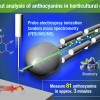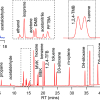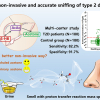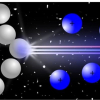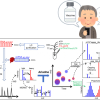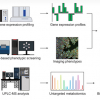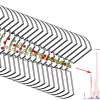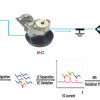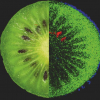Mass Spectrometry News
The Instrumentation Excellence Awards have recognised vacuum equipment specialist Leybold UK. The Leybold Hygienic Enclosure for vacuum pumps has won Product of the Year Cases and Enclosures. The Awards celebrate the best professionals, products, projects and companies across the test, measurement, sensing and control sectors.
PHOTONIS Group has acquired four companies (Xenics, Proxivision, Telops and Elmul) since December 2022. The worldwide leader in image intensifier tubes, the company has diversified its technologies and product portfolios to become the worldwide leader in detection and imaging technologies. To illustrate that strategy, PHOTONIS GROUP becomes EXOSENS
A new platform combines 17-plex assays with MALDI-TOF MS to target 14 different mutation sites of the spike gene.
Probe electrospray ionisation tandem mass spectrometry has been used to analyse anthocyanins in crops.
Selective and sensitive measurement of reactive polysulfides in 22 different vegetables using mass spectrometry with a stable-isotope dilution method.
New calibration approach and new NPL reference materials will enable more widespread deployment of proton transfer reaction mass spectrometers (PTR-MS) for long-term atmospheric monitoring.
A new non-invasive screening method for T2D uses self-developed proton transfer reaction-mass spectrometry.
Acquisition will make electron capture dissociation (ECD) technology available to more biopharma researchers and labs globally.
MIDAS helps improve the discovery and characterisation of elusive interactions between proteins and metabolites.
New results using could significantly improve resonance ionisation mass spectrometry ultra-trace analysis of plutonium isotopes.
A new analytical platform based on liquid chromatography, mass spectrometry and software analysis quantifies the structure of messenger RNA (mRNA) based medicines.
Hiden Analytical has gained the ISO 14001:2015 environmental accreditation.
NTU Singapore has launched the S$160 million Institute for Digital Molecular Analytics and Science, which aims to advance the science behind analysing biomolecules through the use of information technology and data science.
Researchers have developed a sample processing workflow using mass spectrometry and a modified Compound Activity Mapping platform.
Native mass spectrometry is shown to be able to interrogate the pharmacology of the beta-1 adrenergic receptor, a G protein-coupled receptor, and has discovered the endogenous zinc ion as a positive allosteric modulator in well-studied receptor.
Shimadzu and Germany’s University Medical Center Göttingen are developing new clinical LC-MS methods for a more rapid and flexible therapeutic drug monitoring analysis.
A novel focusing quadrupole ion funnel takes advantage of RF ion focusing technology in proton transfer reaction mass spectrometry and greatly improves its sensitivity.
Liquid chromatography-mass spectrometry and an electrochemical flow cell could spark a “paradigm shift” in biopharmaceuticals testing.
A new method to detect Parkinson’s disease has been determined by analysing sebum with paper spray mass spectrometry.
Mass spectrometry imaging provides highly precise information on the spatial distribution of substances. Researchers at the University of Bayreuth have succeeded in making visible an additive in dairy products and a production-related contamination in baked goods.



